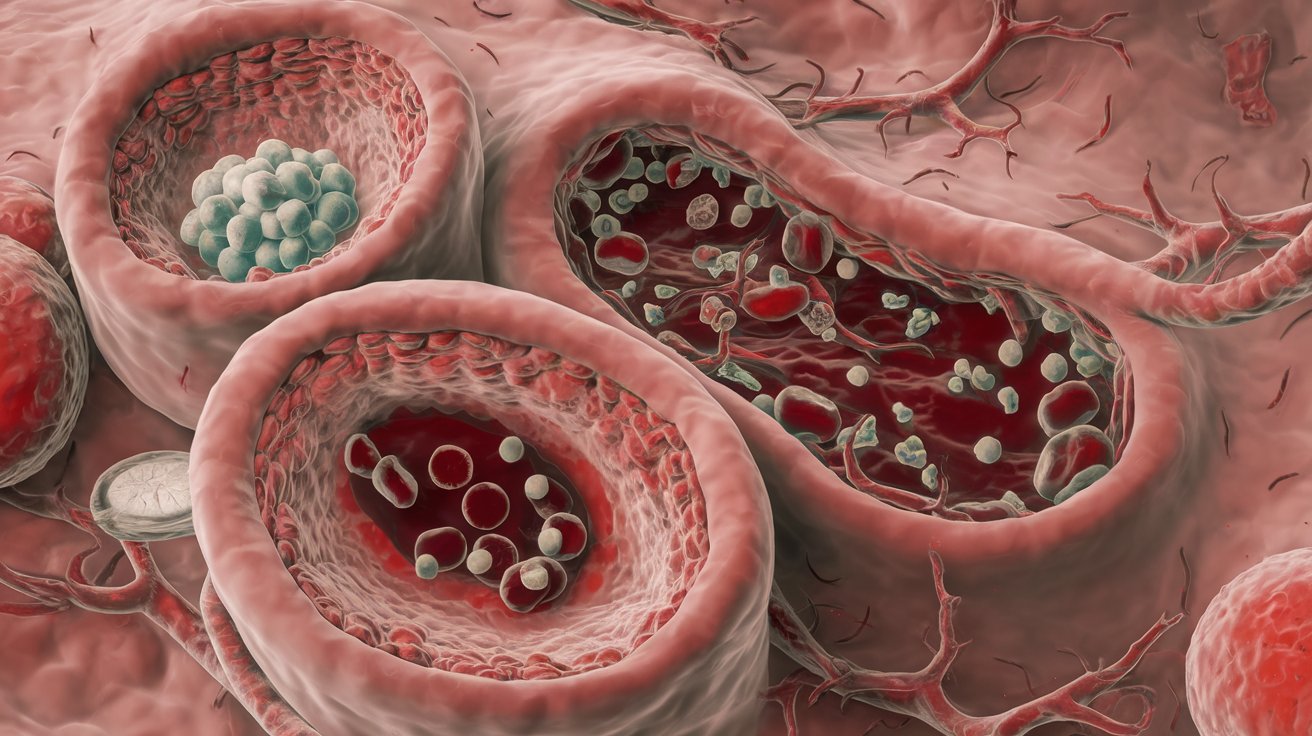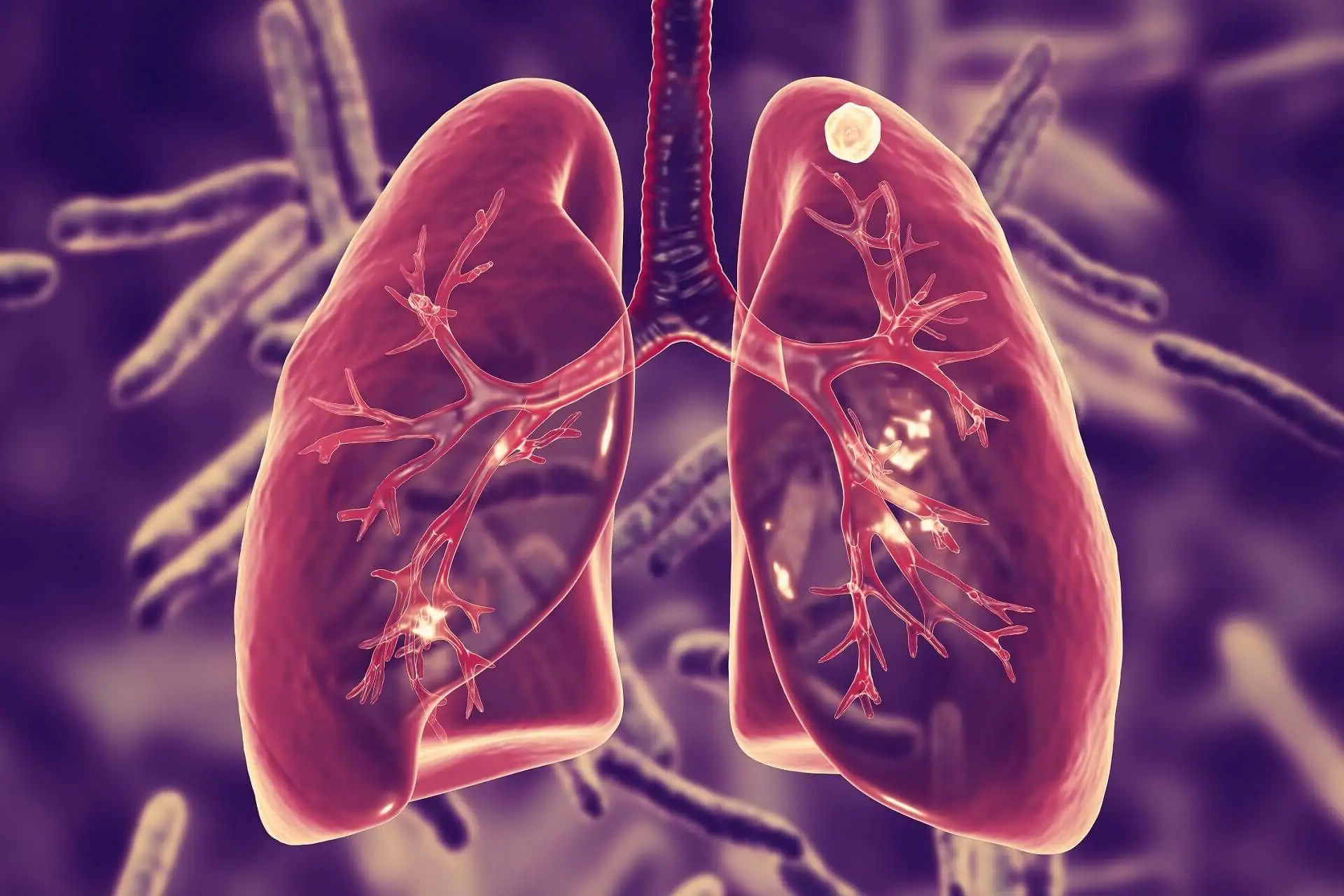
What is Chronic Necrotizing Vasculitis? Chronic necrotizing vasculitis (CNV) is a serious condition where blood vessel walls become inflamed and die. This can happen in any part of the body, affecting organs like the skin, muscles, joints, brain, lungs, and kidneys. The exact cause is often unknown, but it can be linked to infections, autoimmune disorders, drug reactions, or even cancer. Symptoms vary widely, from skin rashes and muscle pain to severe abdominal pain and respiratory issues. Diagnosing CNV involves physical exams, biopsies, lab tests, and imaging studies. Treatment depends on the cause and severity, often requiring medications to suppress the immune system.
Key Takeaways:
- Chronic Necrotizing Vasculitis involves inflammation and death of blood vessel walls, impacting various body parts. It can be triggered by infections, autoimmune disorders, drug reactions, cancer, and hypersensitivity states.
- Symptoms of CNV include skin manifestations, muscle and joint pain, neurological symptoms, respiratory symptoms, and abdominal pain. Timely diagnosis and treatment are crucial for managing this serious condition.
What is Chronic Necrotizing Vasculitis?
Chronic necrotizing vasculitis (CNV) is a serious condition involving inflammation and death of blood vessel walls. It can affect various parts of the body, leading to a range of symptoms and complications.
-
Definition of CNV: CNV involves inflammation and necrosis of blood vessel walls, affecting vessels of any size in different body parts.
-
Affected Areas: CNV can impact the skin, muscles, joints, brain, lungs, and kidneys.
Causes of Chronic Necrotizing Vasculitis
Understanding what triggers CNV is crucial for managing the condition. While the exact cause is often unknown, several factors can contribute.
-
Infections: Viral, bacterial, protozoal, and helminthic infections can trigger CNV.
-
Autoimmune Disorders: Conditions like systemic lupus erythematosus, Sjögren’s syndrome, and rheumatoid arthritis can lead to CNV.
-
Drug Reactions: Certain medications, such as sulfa or penicillin, can cause allergic reactions leading to CNV.
-
Cancer: In some cases, CNV may be associated with malignancies, although this is less common.
-
Hypersensitivity States: Serum sickness and cryoglobulinemia can also contribute to the development of CNV.
Symptoms of Chronic Necrotizing Vasculitis
Symptoms of CNV vary widely depending on the affected organs and the extent of inflammation. Recognizing these symptoms early can help in timely diagnosis and treatment.
-
Skin Manifestations: Red or purple bumps, bluish color to fingers and toes, and ulcers that do not heal.
-
Muscle and Joint Pain: Joint pain, leg pain, and muscle weakness are common.
-
Neurological Symptoms: Pain, numbness, tingling in an arm or leg, weakness of an arm or leg, and changes in pupil size.
-
Respiratory Symptoms: Cough, shortness of breath, sinus congestion, and coughing up blood.
-
Abdominal Pain: Severe abdominal pain and blood in the urine or stools.
Diagnosing Chronic Necrotizing Vasculitis
Diagnosing CNV involves a combination of clinical evaluation, laboratory tests, and imaging studies. Accurate diagnosis is essential for effective treatment.
-
Physical Examination: A complete physical exam to identify signs of inflammation and tissue damage.
-
Skin Biopsy: A skin biopsy can demonstrate the presence or absence of CNV, helping to differentiate it from other inflammatory vascular disorders.
-
Laboratory Tests: Blood tests may reveal elevated inflammatory markers such as erythrocyte sedimentation rate (ESR) and C-reactive protein (CRP).
-
Imaging Studies: Techniques like ultrasound, CT scans, or MRI may be used to evaluate organ involvement and assess tissue damage.
Treatment of Chronic Necrotizing Vasculitis
Treating CNV depends on the underlying cause and severity of symptoms. Various strategies are employed to manage the condition effectively.
-
Removing Irritating Agents: If a drug reaction causes CNV, stopping the offending medication is crucial.
-
Treating Infections: Antibiotics or antiviral medications may be prescribed if an infection is identified as the trigger.
-
Autoimmune Treatment: For autoimmune-related CNV, immunosuppressive medications such as prednisone, cyclophosphamide, pentoxifylline, and azathioprine are commonly used.
-
Symptomatic and Supportive Care: Pain management, wound care, and supportive measures like physical therapy may also be necessary.
Complications of Chronic Necrotizing Vasculitis
CNV can lead to several complications, some of which are life-threatening. Understanding these risks can help in managing the condition better.
-
Organ Damage: Inflammation and necrosis can cause permanent damage to organs such as the kidneys, lungs, and brain.
-
Infections: Patients with CNV are at a higher risk of developing infections due to compromised blood vessels.
-
Bleeding: Rupture of blood vessels can lead to severe bleeding, which may require emergency medical attention.
-
Morbidity and Mortality: Untreated or severe cases of CNV can result in significant morbidity and mortality.
Prognosis and Long-term Outcomes
The prognosis for CNV varies depending on the underlying cause and extent of organ involvement. Long-term outcomes depend on several factors.
- Treatment Response: Patients who respond well to treatment generally have a better prognosis than those who do not.
Final Thoughts on Chronic Necrotizing Vasculitis
Chronic necrotizing vasculitis (CNV) is a serious condition involving inflammation and necrosis of blood vessel walls. It can affect various organs, leading to symptoms like skin lesions, muscle pain, and respiratory issues. Causes range from infections and autoimmune disorders to drug reactions. Diagnosing CNV requires a mix of physical exams, biopsies, and lab tests. Treatment often involves removing irritants, addressing infections, and using immunosuppressive drugs. Complications can include organ damage and increased infection risk. Prognosis varies based on the underlying cause and organ involvement. Effective management requires a multidisciplinary approach, focusing on both treating the condition and providing supportive care. Understanding CNV's complexities helps improve patient outcomes and quality of life.
Frequently Asked Questions
Was this page helpful?
Our commitment to delivering trustworthy and engaging content is at the heart of what we do. Each fact on our site is contributed by real users like you, bringing a wealth of diverse insights and information. To ensure the highest standards of accuracy and reliability, our dedicated editors meticulously review each submission. This process guarantees that the facts we share are not only fascinating but also credible. Trust in our commitment to quality and authenticity as you explore and learn with us.


